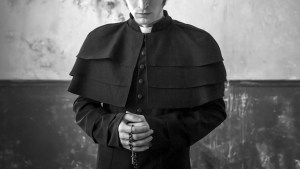Lenten Campaign 2025
This content is free of charge, as are all our articles.
Support us with a donation that is tax-deductible and enable us to continue to reach millions of readers.
When John Gilmary Shea began his career as a historian, many documents relating to the early Church in America were being discarded.
In Shea’s view, some people were throwing away these materials out of ignorance about their importance, while other people — who carried strong anti-Catholic sentiments — were throwing away these materials because of their importance.
So he worked tirelessly to safeguard much of what is now known about the origins of American Catholicism.
Born in New York City exactly 200 years ago on July 22, 1824, Shea would obtain his early education in the same school where his father was the principal.
In frail health from a young age, he was compelled to forgo the typical physical activities of boyhood and instead cultivated his passions for nature and reading, as related by his biographer Peter Guilday.
As a teenager, Shea worked in the accounts department for a Spanish merchant in New York City. This experience enabled him to become fluent in Spanish, a skill that would later help him significantly with research into the heavy Spanish thumbprint on America’s Catholic origins.
Lawyer, seminarian, journalist
Shea graduated from Fordham University (then known as St. John’s College), where he also received a law degree. Within two years after entering the New York State bar, he changed course, joining the Society of Jesus as a novice. At this time, he adopted the use of a new middle name, Gilmary (servant of Mary), which he kept for the rest of his life.
Having spent four years with the Jesuits, however, he decided that he was not meant for the priesthood. And though he was trained as a lawyer, he did not wish to practice law. So he gravitated to journalism, figuring it was more conducive to his passion for historical research.
Shea had grown into a shy, reclusive man who would serve as editor for publications in which his name did not appear for years at a time.
Working largely behind the scenes at such publications as the Catholic News and Sadlier’s Catholic Almanac, he wrote editorials urging Catholic institutions to use more caution with safeguarding their oldest manuscripts.
Shea married in 1854. He would have two daughters who later aided him in his historical research.
Father of American Catholic History
In all, he authored almost 100 volumes of historical scholarship. Among these works included his History of the Catholic Missions among the Indian Tribes of the United States, which encompassed three-plus centuries of evangelizing endeavors by French and Spanish priests, as well as missionaries from an English-speaking background.
He also wrote a biography of the Most Rev. John Carroll, who was the first archbishop of Baltimore, the earliest Catholic diocese in the United States.
Shea’s magnum opus, however, was his four-volume History of the Catholic Church in the United States. This work led to him being regarded as the “Father of American Catholic History.”
In 1883, he became the first recipient of the Laetare Medal, which the University of Notre Dame awards each year to someone who has made an exceptionally positive impact on society. It is regarded as the highest award given to a U.S. Catholic layperson.
Despite such acclaim, Shea was often in a bad financial state and at least twice had to sell off considerable sections of his personal library in order to avoid destitution.
Legacy
His health, never solid, began to decline further in his mid-60s, aggravated by a nasty fall while trying to enter an elevator.
As he sensed death drawing near, and realizing that the preservation of American Church history was a far greater task than one man could ever achieve, he wrote an editorial warning that, “The records of our oldest churches are neglected, and are gradually disappearing.”
Shea died on February 22, 1892, at age 67. He bequeathed his manuscripts and letters to Georgetown University, where they remain in the special collections division of the university library.
Though certainly pro-Catholic, Shea refrained from being overly positive about his subject matter. He was a serious historian. And as his biographer Guilday wrote, Shea was “trusted by the bishops as probably no other layman before or since his day.”



